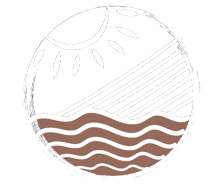Land
The Land Theme identifies how NRM organisations partner with land managers to support sustainable natural and production landscapes and industries in a changing environment. Cradle Coast Authority aims to respect and acknowledge Aboriginal understanding of land and Country, conserve natural, cultural and production values associated with these assets, and to build capacity and develop resilience across these assets to protect them from ongoing and emerging threats.
Land assets encompass topography and the soils that support agriculture, plantation forestry and natural ecosystems, the vegetation that covers and protects these soils, and cultural heritage values.
Impacts to natural and cultural values, soil condition and vegetation are projected due to changes to land use, management practices and biosecurity threats.
Local threats and impacts can be compounded when combined with the global impacts of climate change (including changes in weather patterns and increased frequency and severity of extreme weather).
Asset Classes of Healthy Country, Resilient Landscapes and Soils and Vegetation have been developed to address these issues. Maintenance of
healthy landscapes, soil and vegetation are essential components of all ecosystems – rural and urban, aquatic and terrestrial, domestic and wild. It is therefore acknowledged that the Land Theme is inextricably linked to the Themes of Water and Biodiversity, particularly in supporting vital ecosystem services. There are Priorities and Actions relevant to sustainable land management in all Themes, such as catchment management planning, soil erosion and nutrient management and the management of important vegetation communities, including riparian vegetation.
PARCELS OF ABORIGINAL MANAGED LAND
63,930 ha is under management by Aboriginal land authority
Indigenous Protected Areas include Preminghana, Risdon Cove, Putalina, Mount Chappell, Badger Island, Babel Island, Great Dog Island, lungtalanana
FARMLAND
18,900 km2 of Tasmania is used for farming
Sheep farming (2,646 km2), beef cattle farming (5,670 km2), dairy farming (3,591 km2) and vegetable farming (2,079 km2) account for 56% of agricultural land area
FARM BUSINESSES
Generated $1.68B during 2018–19, increasing from $1.48B during 2015–16
Milk ($475M), cattle and calves ($342M) and potatoes ($127M) accounted for 57% of statewide agricultural production
IRRIGATION SCHEMES
Operated by Tasmanian Irrigation (GBE), the schemes supply over 85,000 ML of water to agriculture per year
Dial-Blythe, Duck, Cressy Longford, Great Forester, Greater Meander, Kindred-North Motton, Lower South Esk, Midlands, North Esk, Sassafras Wesleyvale, Scottsdale, Sorell, South East (Stages 1 & 2), Southern Highlands, Swan Valley, Upper Ringarooma, Whitemore, Winnaleah
OF FARMS WITH CONSERVATION AREAS
Combined total of 110,770 ha
812 Tasmanian farm businesses have an area of land set aside for conservation or protection purposes
HECTARES OF PRODUCTION FOREST
Total area on public land
434k hectares of timber reserves on private land. 283k plantation forest across tenures. Annual value of $1.2B to the Tasmanian economy

